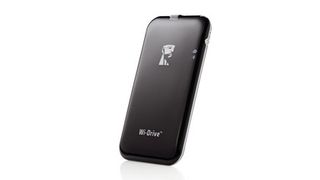Mac and iPad help: 50 solutions to try
Trouble with your new Mac or iPad? Here are the fixes you need
2. Grinding the gears
If your Mac's hard drive makes clicking or grinding noises when it tries to start up, something is wrong and you should back up data and have it replaced immediately. If your fans blow on high constantly, it's also time for a trip to the Mac doctor.
3. Nothing to see
If your Mac sounds like it's starting up but nothing appears on the screen, flash the video RAM and PRAM by holding the Command, Option, P and R keys together during startup until you hear the startup chime a second time. This resets the display and should hopefully cause the screen to show up again.
4. Where's the system?
If your Mac displays a flashing question mark icon and will go no further during startup, try holding the Option key during next boot and choosing the installed system. If this doesn't work, boot from a system DVD and perform disk repair or reinstall.
5. Bluetooth woes
Oddly, some Mac models don't seem to like being booted up when Bluetooth peripherals are active, especially Apple wireless keyboards and Magic Trackpads. Boot times can slow considerably. Consider switching off Bluetooth peripherals during startup and back on again afterwards.
Four alternative booting options

1. Use a disc
On any Mac that has an optical drive you can boot from a system DVD or a specialised diagnostic and repair disk such as those from TechTool or Diskwarrior. This will bypass the installed system, and allow the program to analyse and try to repair any software faults, or diagnose hardware faults.
2. Use a flash drive
It's possible to install some flavours of OS X including 10.7 on a USB thumb drive. There are plenty of instructions online, and it's a good way to boot up and run diagnostics if your internal drive has died. It's not a long term solution to using a Mac day to day though.
3. Use an external hard drive
OS X can be installed on an external USB2 or FireWire hard drive and holding the Option key during startup will let you select it. If the drive is large, it's a good way to use OS X normally even if your internal drive has died, until you can get it replaced.
Get daily insight, inspiration and deals in your inbox
Get the hottest deals available in your inbox plus news, reviews, opinion, analysis and more from the TechRadar team.
4. Boot from a network
If you are on an office or campus network that has been properly configured, it's possible to boot your Mac from an image stored elsewhere on the network. Hold down Option during startup to select the remote drive. However, this requires a very fast network and some setup beforehand in order to work efficiently.
Six ways to get your Mac going again
1. Reset the memory
All kinds of startup strangeness can be remedied by zapping the PRAM, which involves holding the Command, Option, P and R keys together during startup until you hear the startup chime twice. It clears out all parameters and forces the Mac to re-examine its own hardware and connected devices, which often solves problems.
2. Use Programmer
The Programmer button is a very last resort, and resets all sorts of fundamental parameters to do with the way your Mac behaves. It sometimes works if zapping PRAM isn't helping, and your Mac won't even power up. The process is different for specific Mac models so consult Apple's support website to find yours.
3. Boot from a DVD
Insert the system DVD that came with your Mac and hold the C key down during booting. It will take a bit longer than normal but once you have booted you should be able to run Disk Repair to hopefully solve any problems. If you have OS X 10.7 or later, you can use Internet Recovery to restore a system online.
4. Use fsck
If you are confident with trying out a bit of UNIX, hold down the Command and S keys during bootup to boot into Single User mode. From there you can type "fsck-fy" to verify and repair drives at a low level Type "reboot" when done and your Mac will hopefully boot as normal.
